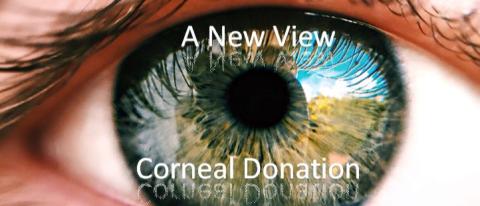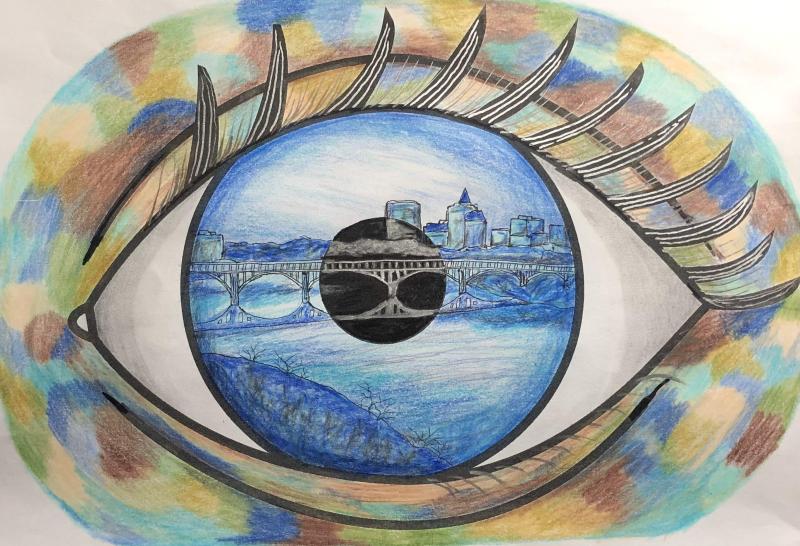Ocular and Tissue Donation
Ocular/Tissue Donation
In Saskatchewan Ocular Donation is offered near or at end of life. It can be a part of the discussion you have with your family. Unlike organs which must be transplanted soon after retrieval, donated tissues can be safely stored until needed. Donated human tissue can be used in many surgical applications to enhance individuals’ lives. Corneal grafts restore sight and the sclera can be used from many eye surgeries as well. Bone and tendon grafts can help restore the mobility and quality of life to patients with cancer or orthopedic and sport-injury.
When looking at donation, many people are aware of organ donation but are unaware of tissue donation. A single donor can enhance up to 75 individuals' lives. The following types of tissue can be donated:
- Ocular (eyes): Specifically the cornea and sclera. The cornea is the clear outer layer at the front of your eye. The sclera is the white part of the eye. Ocular donation can be used to save or restore sight and used for a variety of eye saving procedures.
- Bones and Tendons: Often used for orthopedic surgery. Currently Saskatchewan orders these in from out of province donors. Bone and tendon transplants help to improve mobility.
- Amniotic Membrane: This is often used as a sort of biological band-aid to assist in healing or replacing damaged eye tissue. Due to the fact that it is clear, it makes it perfect to use on the surface of the eye. Saskatchewan currently orders in amniotic fluid from other provinces.
Everyone under the age of 81 has the opportunity to be a donor of tissue, even if they are unable to be an organ donor. There are criteria that donor coordinators carefully assess to ensure the safety and suitability of all forms of donation.
Letting your family and loved ones know about your wishes to donate your tissues prior to your passing may relieve the burden of that decision upon your passing.
Some common questions we get about ocular (eye) donation are around "poor vision" and people worry that their loved one had poor vision so they cannot be a donor. "Poor vision" is usually caused by the part of the eye called the lens. For eye donation, the part of the eye retrieved is the cornea, so those with poor vision are still able to give the gift of sight to others. Even if someone has had a previous eye surgery, they may still be able to be an ocular donor.
In regards to an open casket, when someone has been an eye donor a prosthetic is placed and you are unable to tell that a procedure had taken place. Sometimes there may be some slight bruising to the eyes, but the person’s eyes would look like normal as if someone was sleeping.
Coroner’s Case – the Saskatchewan Coroner’s Service is very supportive of opportunities for offering donation as a part of end-of-life care and allowing donation to take place, putting as few restrictions as possible on the donation process. If someone's death is a coroner’s case, we do contact the coroner to receive permission to proceed with the donation process or if there are any restrictions on donation.
Corneal transplants are the most commonly performed transplant and have a 95% success rate.
Retrieval takes place at the bedside in hospital or healthcare center once family and loved ones have had their time, there is no rush for families to leave, morgue or in the funeral home. Retrieval of ocular tissue is performed by Donor Coordinators.
Retrieval takes approximately 45 minutes depending on the technique used.
Next steps
When a patient has passed away or death is near, the healthcare providers will need to fill out the Tissue Donor Assessment Form. This form is found on the back of the Notice of Death. This form is to help guide staff on how to refer a patient to the donor coordinator. There are five initial eligibility screening questions.
If the answer is "yes" to any of these questions, then they are not a candidate for ocular donation.
If the patient answers all "no's", then they are a possible donor. Like organ donation, it is important that we provide the opportunity for tissue donation to the family or next of kin to make an informed decision. The goal of the program is to offer donation to all those eligible across the province.
The donor coordinator will review suitability by looking into the possible donor’s history. If the patient is deemed a suitable candidate, the donor coordinator will discuss the opportunity for tissue donation with family. There is a questionnaire that must be done with family/next of kin to further assess the safety and suitability for donation. Afterwards, the donor coordinator will come to retrieve the ocular tissue from the donor. When complete, the body can be released from the hospital to the funeral home of the family's choice. In order to honour wishes for an open-casket, the donor coordinator will use prosthetic caps that maintain the natural curvature of the eyes. This, along with the preparations made by the funeral home staff, ensures that there is no visible evidence of the donation process.
The corneal tissue can be initially stored for up to 14 days before use. If needed, it can be further processed and safely transferred to long-term storage for up to 3 months.
Why we do it
The cornea has five layers. Corneal transplants do not always transfer all the layers. This depends on which part of the recipient's cornea is damaged or how much of their cornea needs to be replaced.
The most common corneal transplants in Saskatoon are Penetrating Keratoplasty (PK) and Descemet's stripping automated endothelial keratoplasty (DSAEK) Regina's surgeon is trained for Descemet’s Membrane Endothelial Keratoplasty (DMEK). The DMEK process allows quicker transplant, better outcomes, quicker healing time, and lowers rejection rates post-transplant. DMEK is very similar to DSAEK, except that the donor tissue implanted does not include any stromal-layer tissue. Not every recipient qualifies for DMEK and not all donor tissue is suitable to be prepared using the DMEK process. Therefore both PK and DSAEK corneal transplants are still needed, and done successfully.
If a cornea does not have the cellular quality or health to provide vision-saving or restoring transplantation, then the outer later (endothelium) is preserved and used as a patch graft for an Ahmed valve (a shunt used to treat glaucoma) to help release pressure from inside the eye.
The sclera can be used for eye-saving surgeries such as a glaucoma shunt patch or can be used to help a prosthetic eye move by connecting the eye muscles to the donor scleral tissue. The sclera may also be used in a variety of eye-lid and plastic surgeries.




